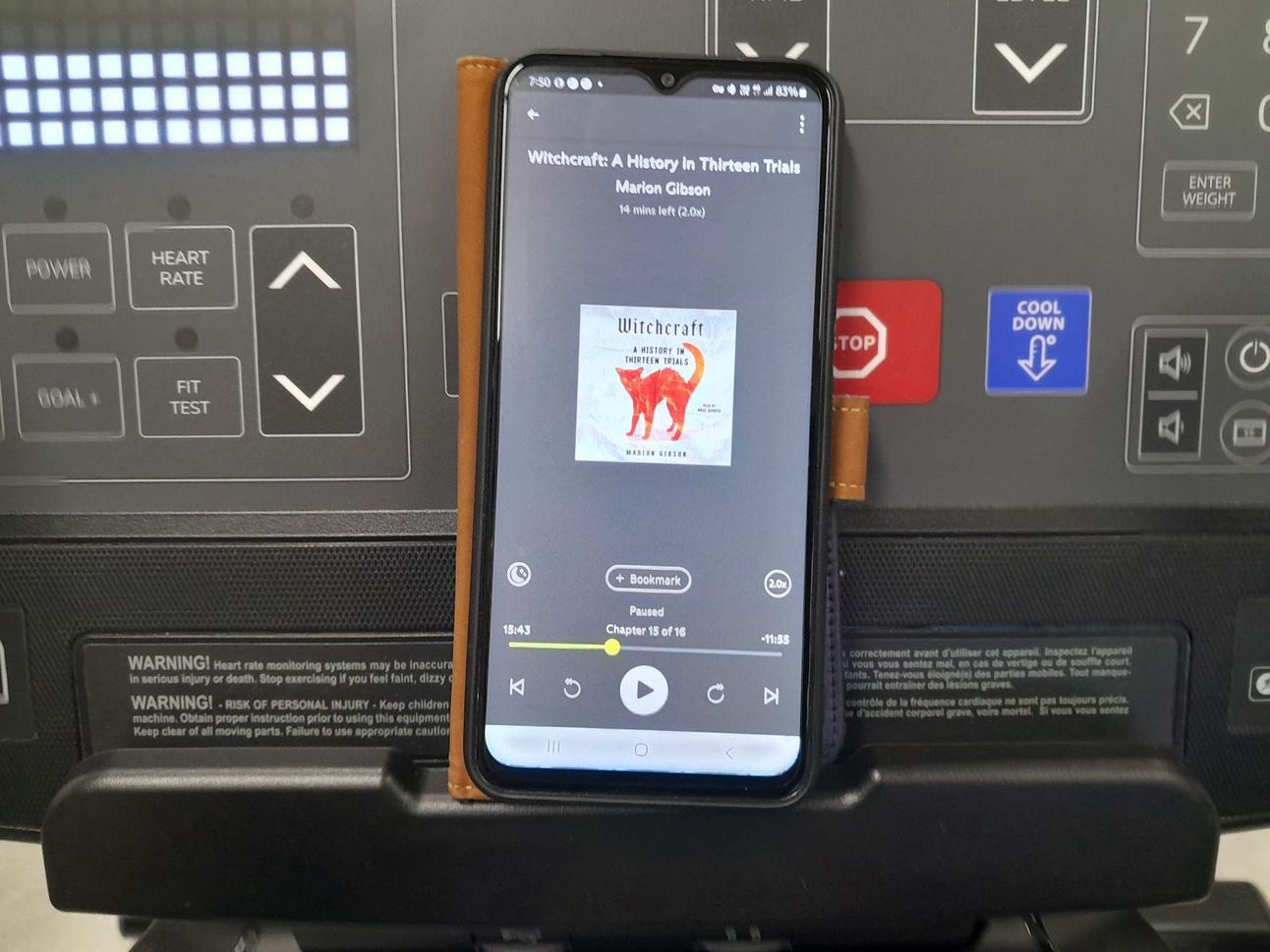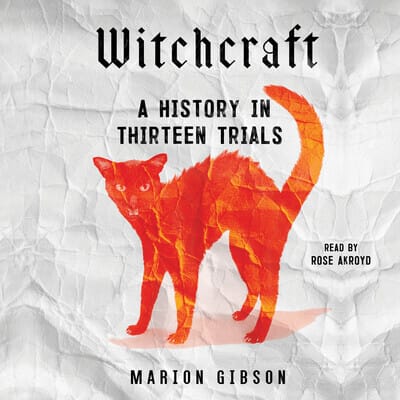
I love to listen to audiobooks during workouts
A word or two before the book review:
Even though we are currently hanging out in Australia it’s pretty easy to keep up with US news here. There’s social media of course, and the newsletters, podcasts and YouTube videos that I subscribe to. And there’s also SBS - an Australian television network that carries several foreign newscasts in their entirety, including the US network ABC’s World News Tonight with David Muir.
So I did see the news generated by Ari Melber’s interview with the incarcerated Michael Avenatti on MSNBC. I haven’t seen the interview itself, just the mostly negative reaction to it. I bring this up not to delve into the controversy Melber’s interview caused, but because the trial that sent Avenatti to jail involved allegations of witchcraft, the subject of today’s book.
In 2022 Avenatti was on trial for stealing $300,000 from Stephanie Clifford (whose stage name is Stormy Daniels). During the trial Avenatti’s lawyers attempted to call his accuser’s mental state into question by pointing to her interest in witchcraft and the paranormal. While the lawyer’s attempts failed, the trial is one of the most recent that Marion Gibson points to in the book I’m reviewing today.
It was a coincidence, I suppose, that the day I read the section of Gibson’s book referencing Avenatti’s trial was also the day that Melber brought the disgraced lawyer back into the limelight.
This is the perfect example of why I love to read history. History is not just the study of things done years ago by people long dead - it helps provide context and understanding of the world we live in today.
Anyway, on to the book review…
Witchcraft by Marion Gibson is a history of witches and witch trials with a distinct point of view, and Gibson lays it out for readers from the start. She endeavors to tell these stories from the point of view of the accused. Gibson wants us to understand the context around which these trials took place. She explores the importance of gender and power (women’s power was not to be trusted), indigenous spirituality and the clash with colonial rule, and political conspiracy theories right up to today.
Gibson tells the stories of thirteen witch trials over the span of seven centuries - from the late 1400s right up to the present day. The book travels not just through time but also geography, taking us from Europe to America to Africa. Along the way Gibson shows how changing religious and social forces amplified disputes among neighbors and turned them into supernatural accusations hurled at the (mostly) women who were put on trial.
At the heart of all of the trials is the notion of “demonization”. As Gibson explains it, demonization is a theory first put forward by medieval Christian leaders. Notions of magic preceded Christianity in many cultures, and magical practices continued after Christian beliefs took root. Often these practices and beliefs lived peacefully side by side. Finding a four-leaf clover for good luck, and the association of the four-leaf clover with Saint Patrick of Ireland is one example of that.
But some Christian leaders felt that any so called “magic” practices must come from the devil, since they are not to be found in scripture or church teachings. These practices were deemed demonic, and those who were found to practice them needed to be punished.
In the later chapters of the book Gibson lays out how colonialization may have led Western notions of demons and witches to infiltrate local African shamanistic practices, changing those practices but also providing a basis for the colonizers to prosecute (and persecute) the locals.
The first trial covered in the book takes place in the late 1400s in Innsbruck in what is now Austria. The accused in this case were lucky as they had enough support and influence to secure a solid defense and were set free, while their accuser was imprisoned for a time before being asked to leave town. While the women passed through the trial and then faded into history, the priest who was their accuser followed up by writing an influential book on demonization that helped to feed a succession of witch trials.
Another of the trials took place in “Finnmark” - the north of what is now Finland and Denmark. In the 1600s the area began to be populated by emigrants from farther south, who encountered the local Sami people already living there. Reports of “Sami magic” sparked witch trials. Around 100 people were burned to death as witches as a result of these trials.
The Salem witch trials are covered as well, with its mass hysteria and many accusations of witchcraft. More than 200 people were accused of witchcraft, and nineteen were hanged.
The trial that particularly interested me took place in 1920s Pennsylvania. This involved so called “powwow magic” practiced by the Pennsylvania Dutch. Powwow magic is essentially a set of chants and practices that were mostly considered “good magic”. Good magic was meant to be helpful and practitioners were sought out by local people to bring them luck.
But one unlucky fellow could not seem to catch a break. John Blymyer consulted with a powwow “witch” in Lancaster County to see how he could change his fate. The witch pointed to a local farmer as the source of Blymyer’s problems, claiming he’d placed a curse on Blymyer.
Blymyer and two friends set out to correct the situation and ended up killing the farmer. Whether that was their intent or things just got out of hand is a matter of debate even today. The three were convicted of the farmer’s murder, but their trial and its discussion of magic spells and witches caused a nationwide sensation.
The final chapter brings us up to today, with a discussion of witchcraft practices still taking place in Africa, a discussion of the Avenatti trial in the US and the modern acceptance of “witchcraft” as a religious practice in its own right. Gibson also discusses the common use in the US of the term “witch hunt” (particularly by Donald Trump), what it means and how it’s misused.
RATING: Four Stars ⭐⭐⭐⭐
RATING COMMENTS: A deep dive into witch trials over the centuries and an exploration of the context around those trials. The author is an expert on medieval magic and witchcraft and lays out her premise and her goals from the start of the book. She mostly delivers on them. This book may be of particular interest to fans of medieval history, but it does bring its history right up to the present day.
WHERE I GOT MY COPY: I listened to an audio copy of the book that I accessed through the Everand app (formerly Scribd).
The audiobook version is read by actor and narrator Rose Ackroyd. She did a perfectly acceptable job. (That faint praise is not meant to be a knock on her, it’s just that the material at hand doesn’t require a broad range.)
See What Others Think
Daily Mail (UK): How to spot a witch...just find out if she’s annoyed a powerful man!
The New Yorker: Trials of the Witchy Women
Kirkus Reviews: A thought-provoking, sweeping work of social history.
Title: Witchcraft: A History in Thirteen Trials
Author: Marion Gibson
Narrator: Rose Acroyd
Publisher: Simon & Shuster Audio
Publish Date: January 6, 2023
ISBN-13: 9781797171630
Publisher’s List Price: $23.99 (US audiobook download. Price as of Apr 12 2024.)



